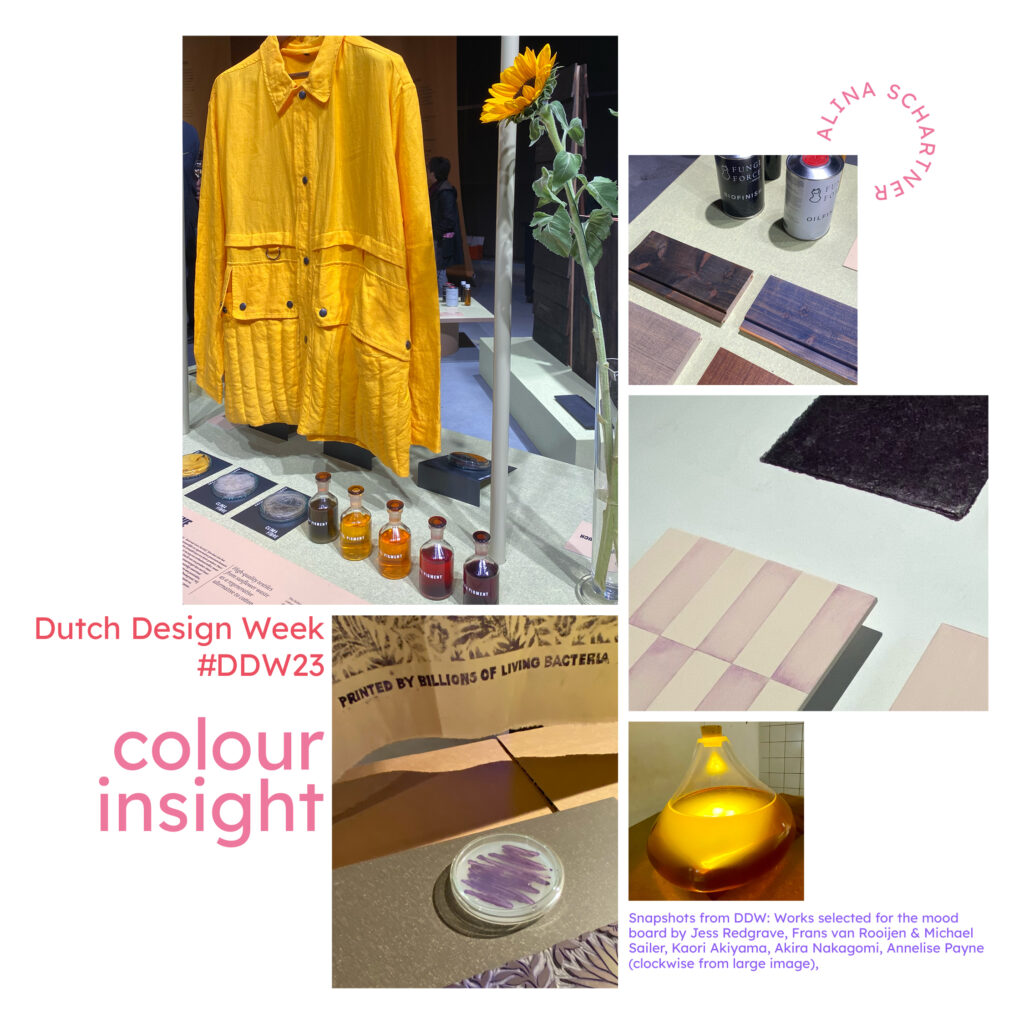
This is how we should think about the future of colour! Much more than just aesthetics – although aesthetics do have a very valid function as well. Such a wealth of colour innovation coming out of Eindhoven this year. To my delight, there was a high amount and quality of designers developing/working with natural and more sustainable colourants.
Some highlights (clockwise from large picture):
– Textiles, pigments and sunflower waste impregnation. The water-repellent sunflower coating retains the breathability. Designer: Jess Redgrave.
Why is it important?
The use of sunflowers could be a regenerative alternative to cotton. Cotton requires large amounts of water to grow, tends to deplete soils through monocropping, and is often heavily treated with pesticides. In addition, cotton can only be grown in certain parts of the world and often has to be transported over long distances.
– Circular varnish to protect wood made from harmless fungi and linseed oil. The fungi are nourished by the linseed oil and can even repair themselves if damaged. Designers: Frans Van Rooijen and @Michael Sailer
Why is it important?
Wood painted with chemicals often can’t be recycled. The toxic substances often end up in our natural environment. This bio-finish doesn’t harm the planet.
– Pigments derived from algae. You may have seen seaweed being used to dye textiles previously. ‘NORI PIGMENT’ was first shown at Milan Design Week in April this year. I missed it there. Now it was great to see the tile work at Dutch Design Week, which extended the initial research. Designer: Kaori Akiyama of STUDIO BYCOLOR.
Why is it important?
Algae are naturally abundant resources.
– Literally honeyed light to enhance your living space. Designer: Akira Nakagomi
Why is it important?
Using the inherent colour of materials is an important aspect of future-forward colour design. The designer also points out that honey can be used as emergency food because it can be kept at room temperature for a long time. It also has a sterilising effect and is thought to reduce inflammation when applied to wounds. Pretty sweet, eh? (pun intended)
– Using living bacteria as co-designers in block printing. I first saw ‘PRIMORDIAL PIGMENTS’, during Milan Design Week 2023, and when I saw it again, I just had to feature this beautiful project. Designer: Annelise Payne
Why it matters?
Microbial-based colour palettes that work with pigment-producing bacteria instead of conventional dyes certainly need to be explored more.
Bravo to all the mentioned designers!
